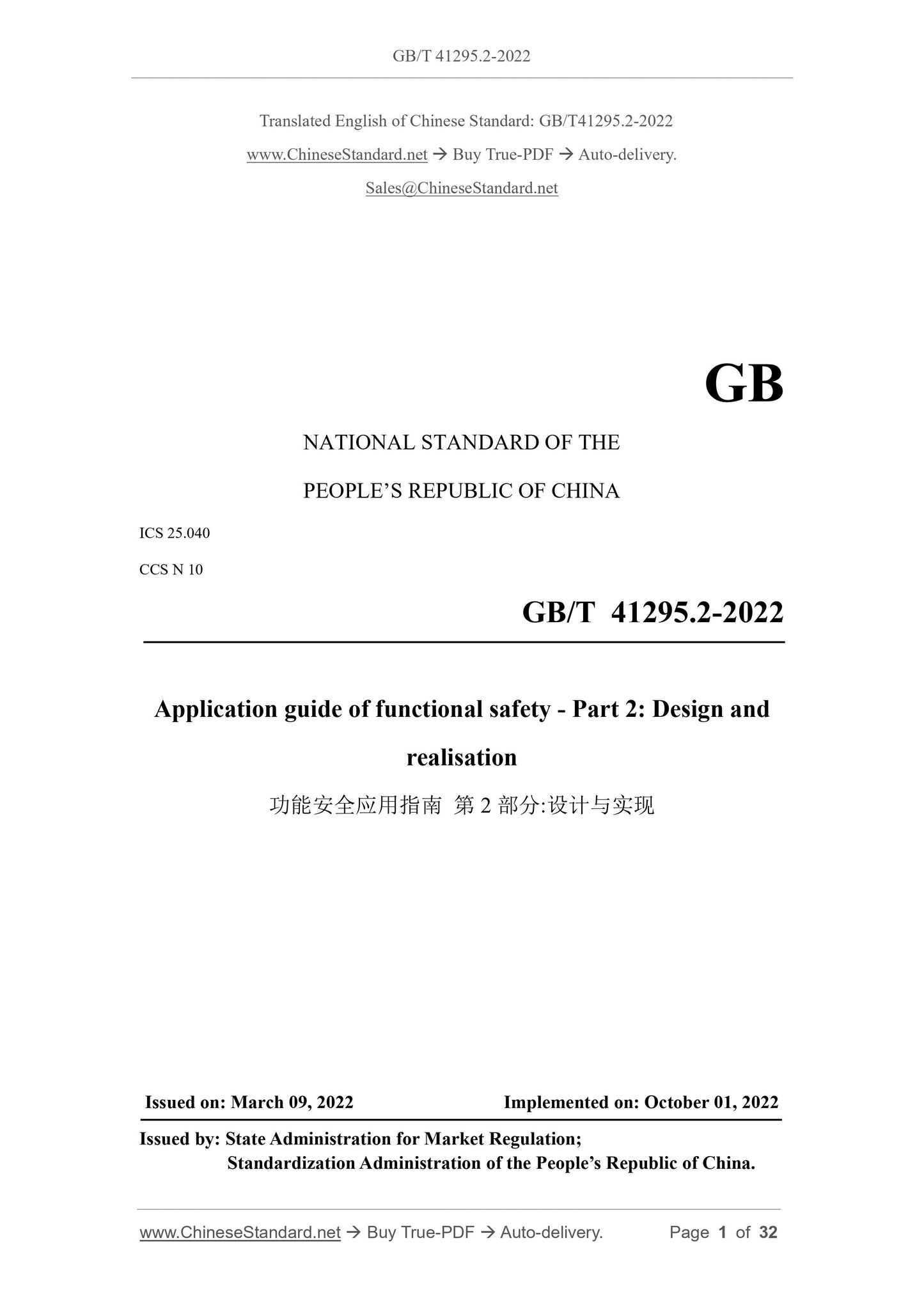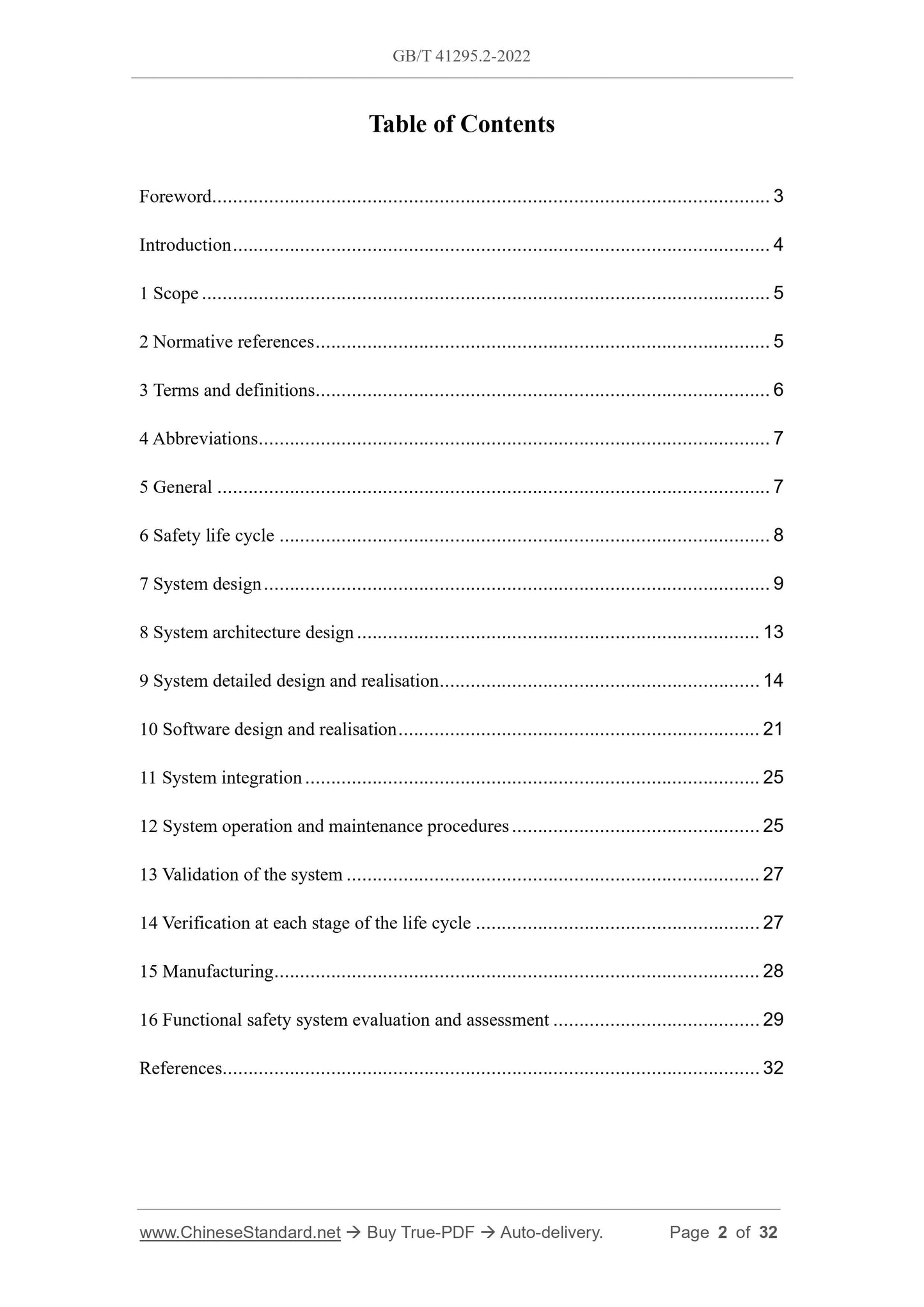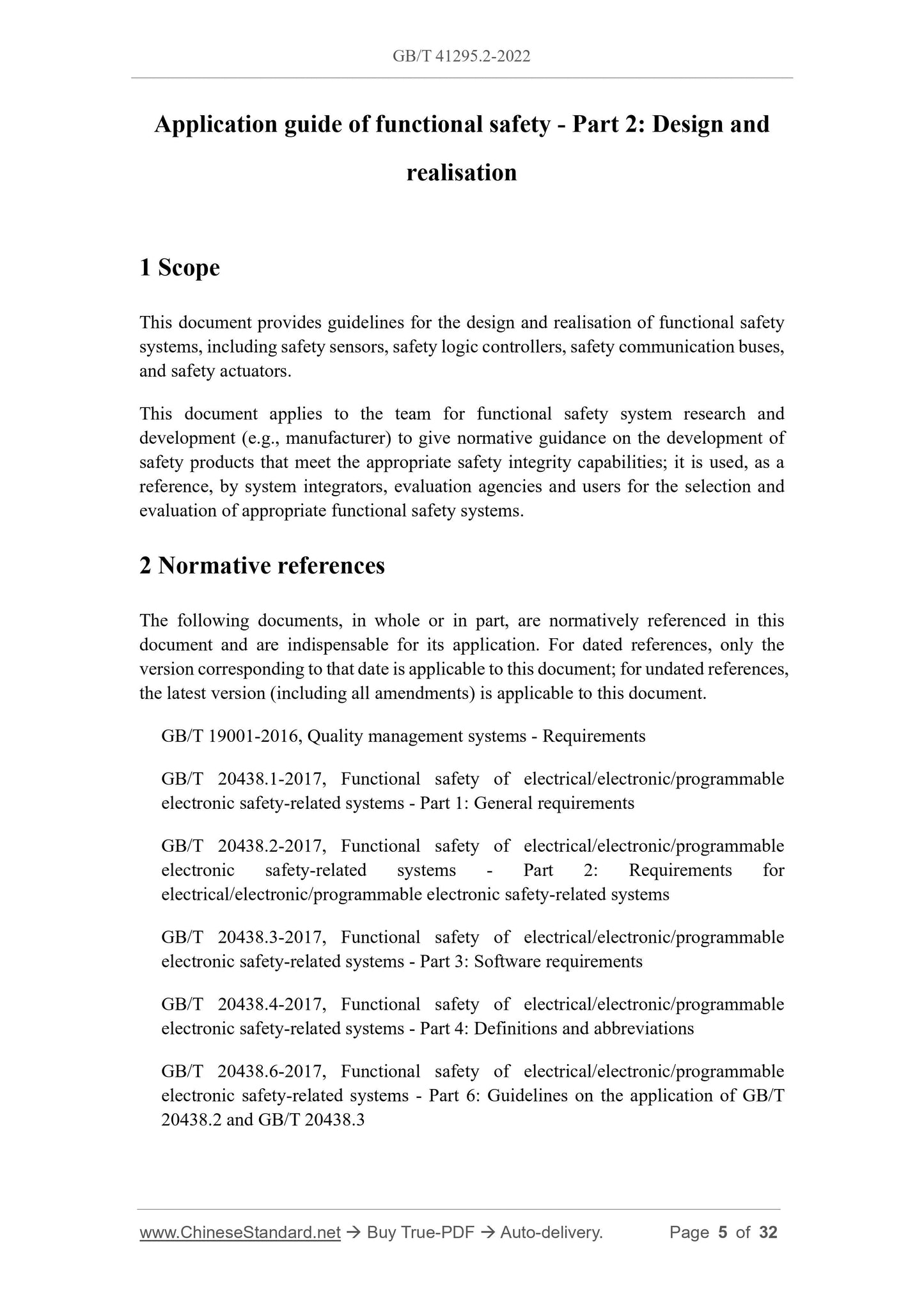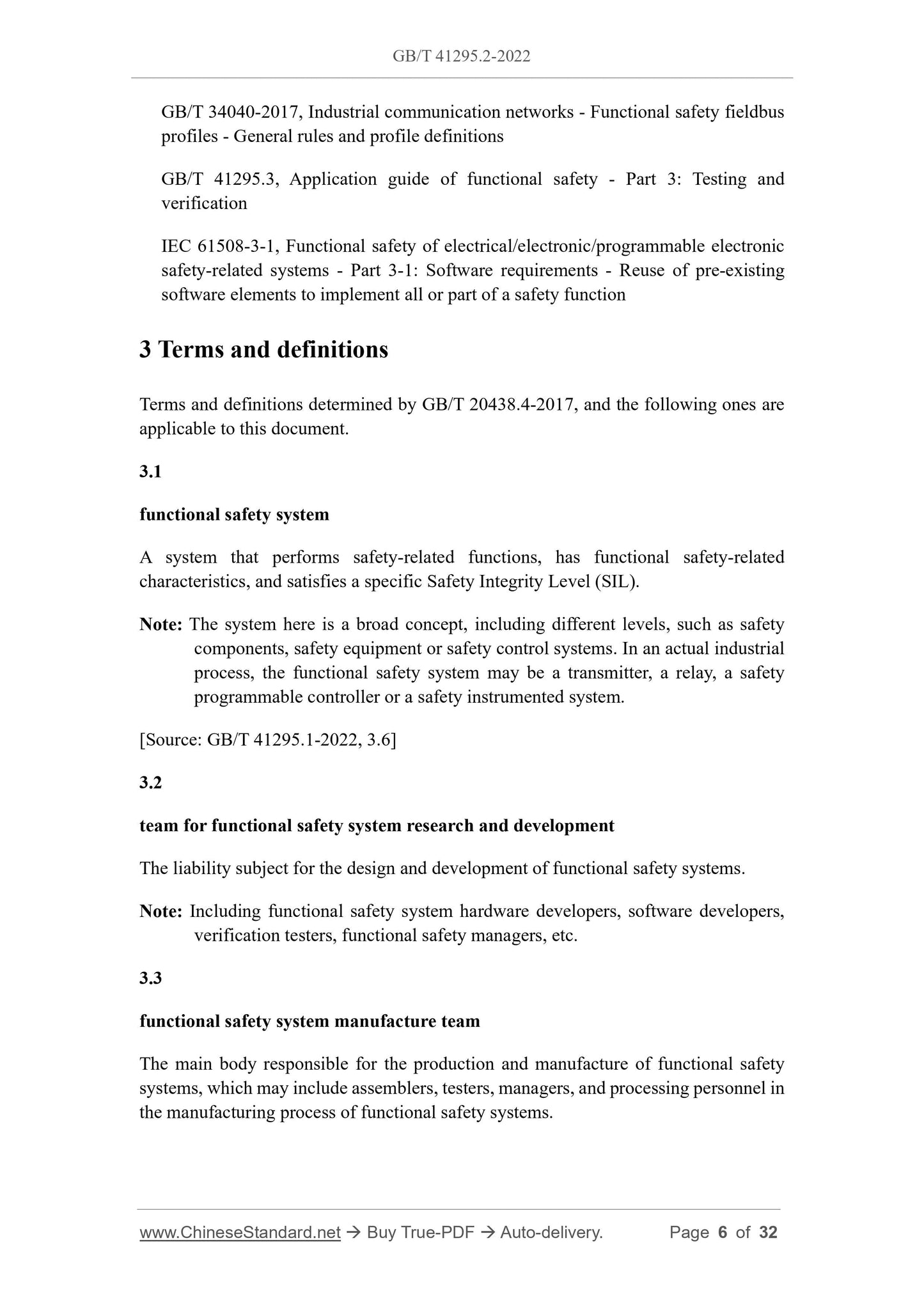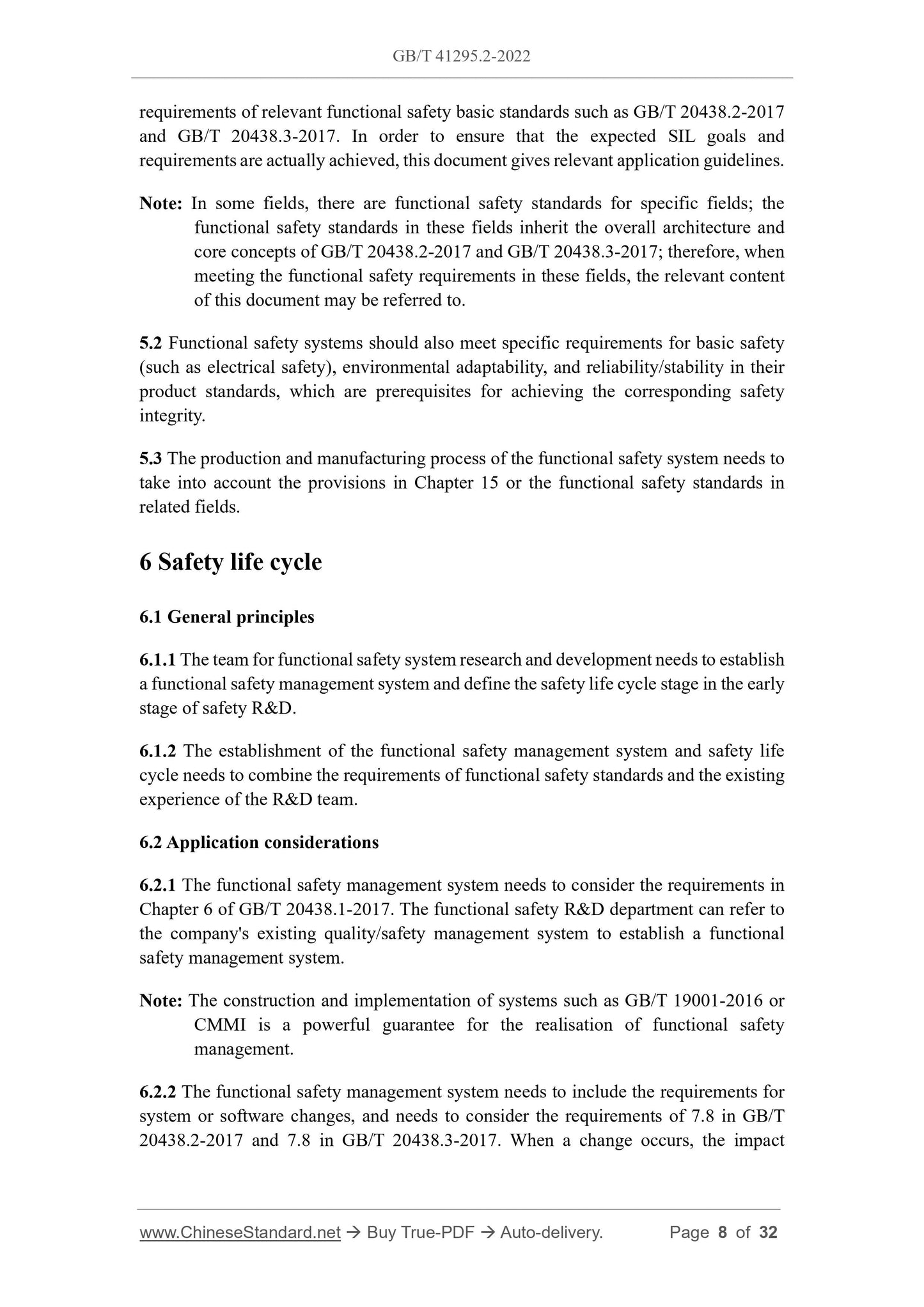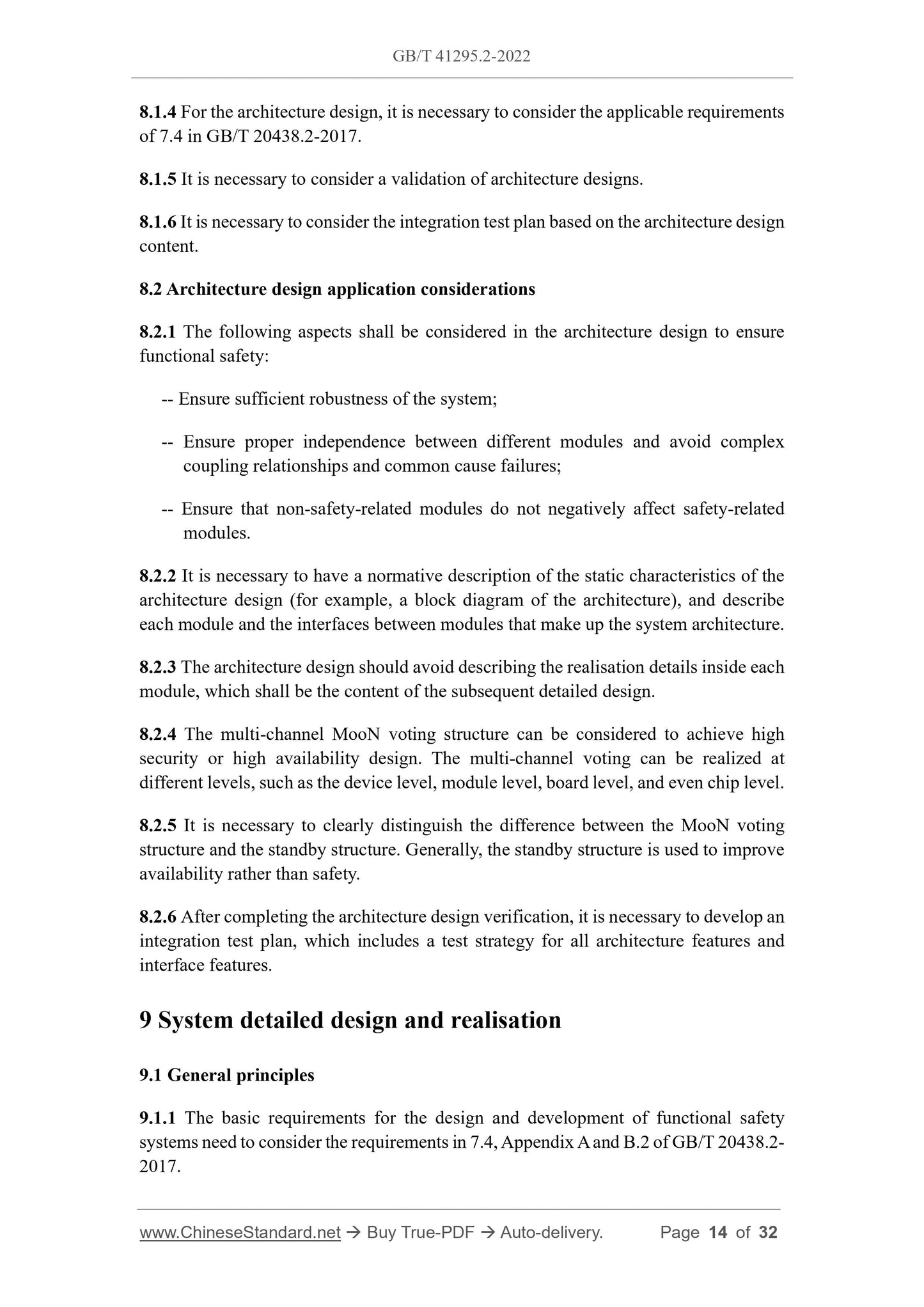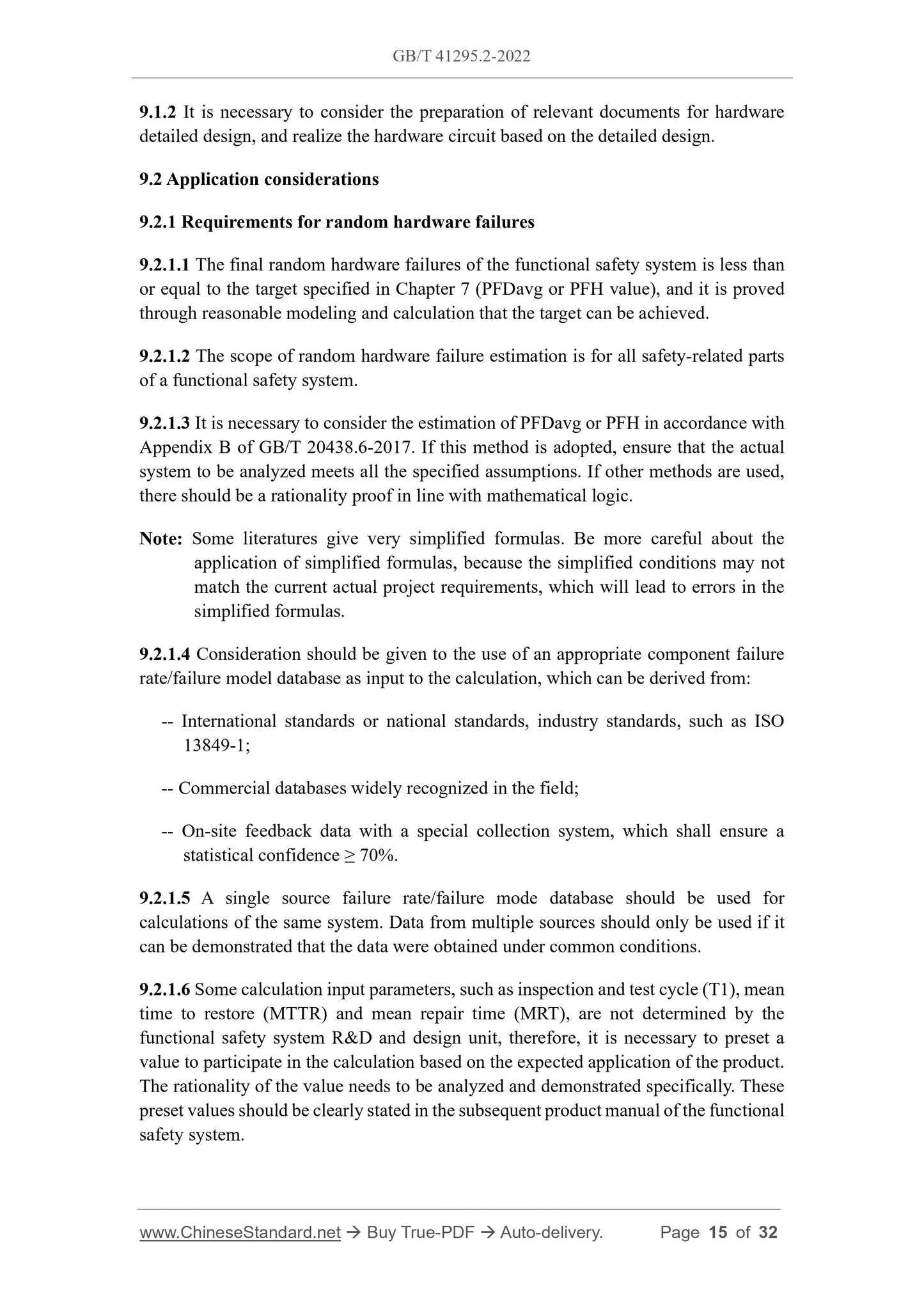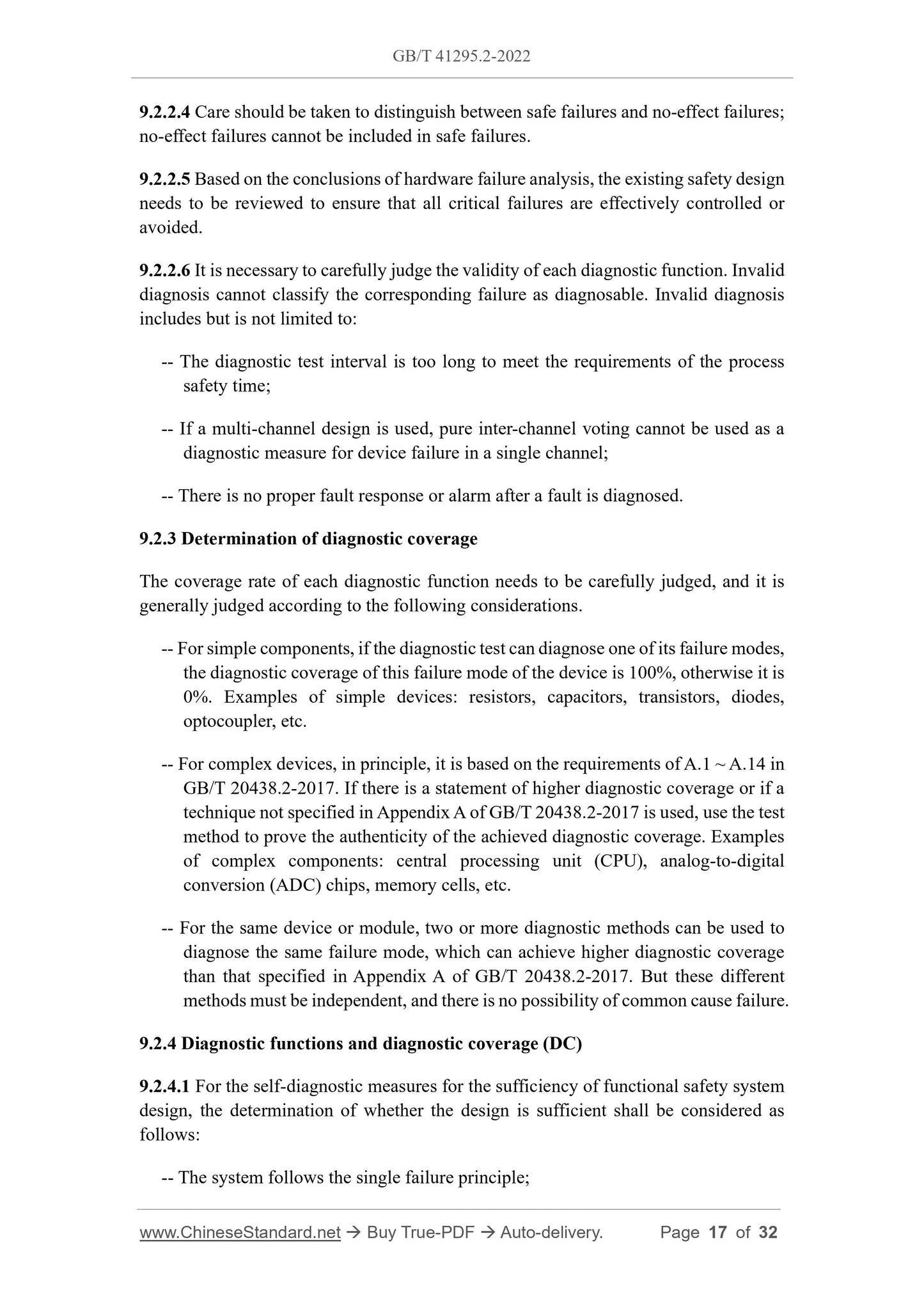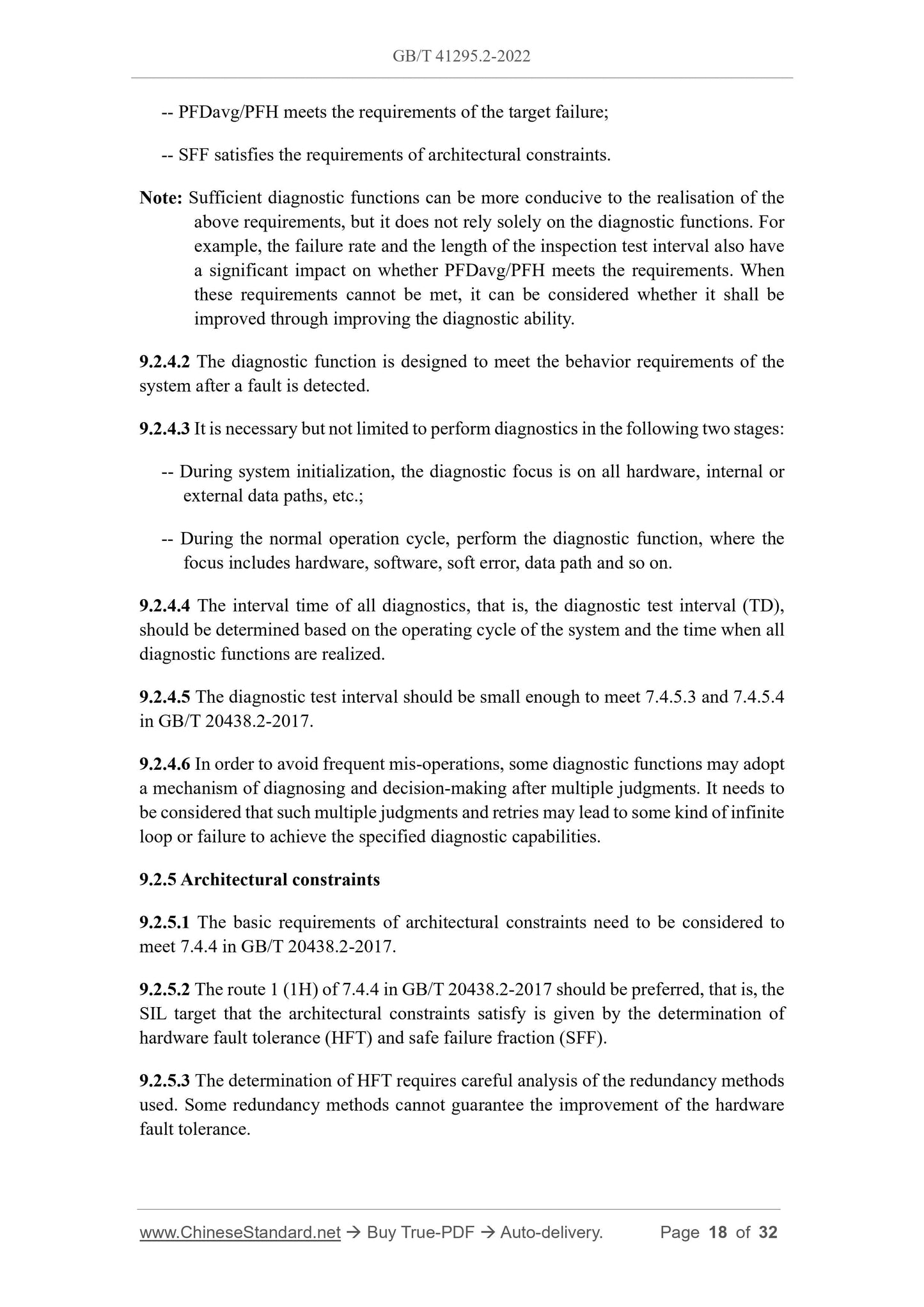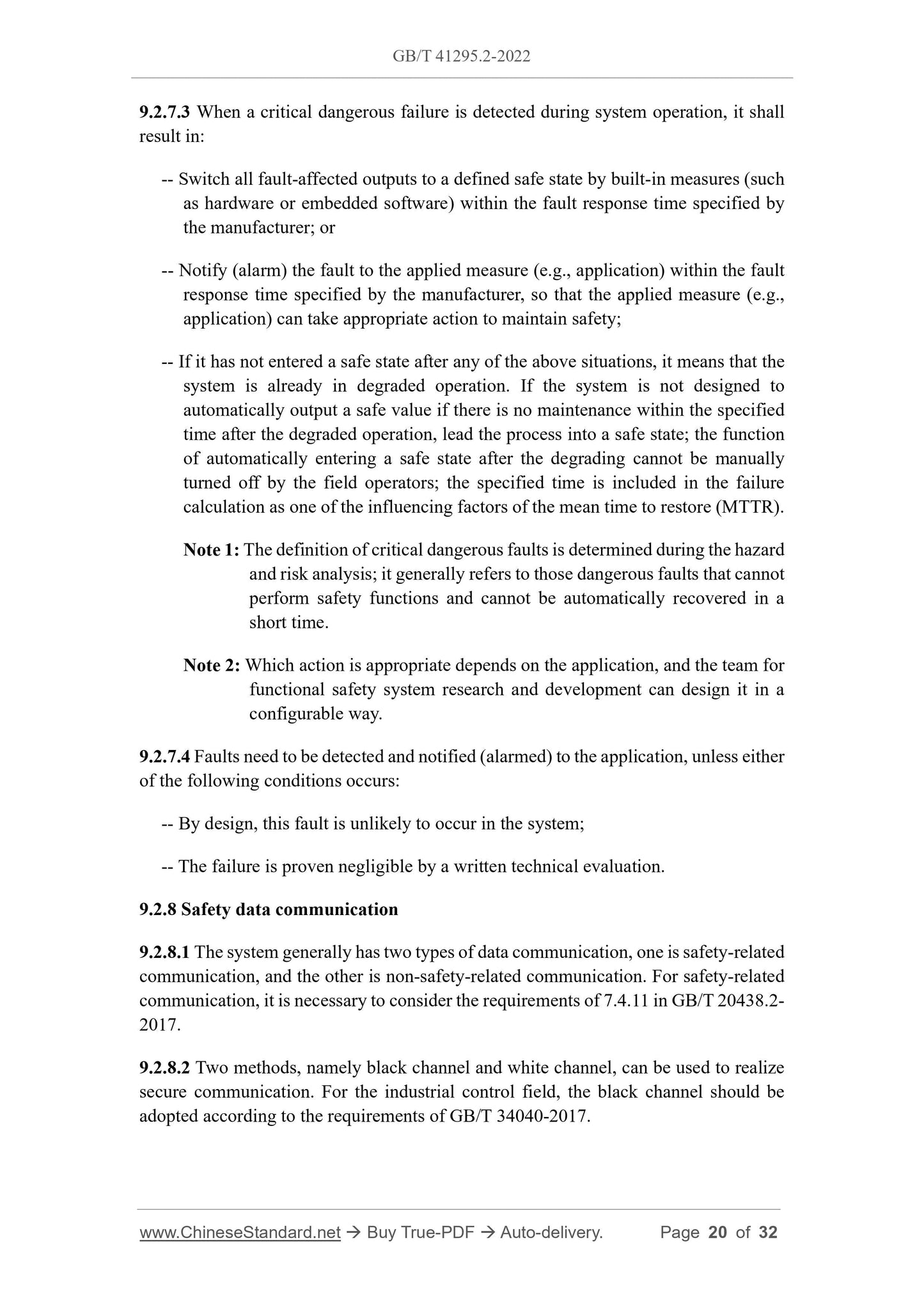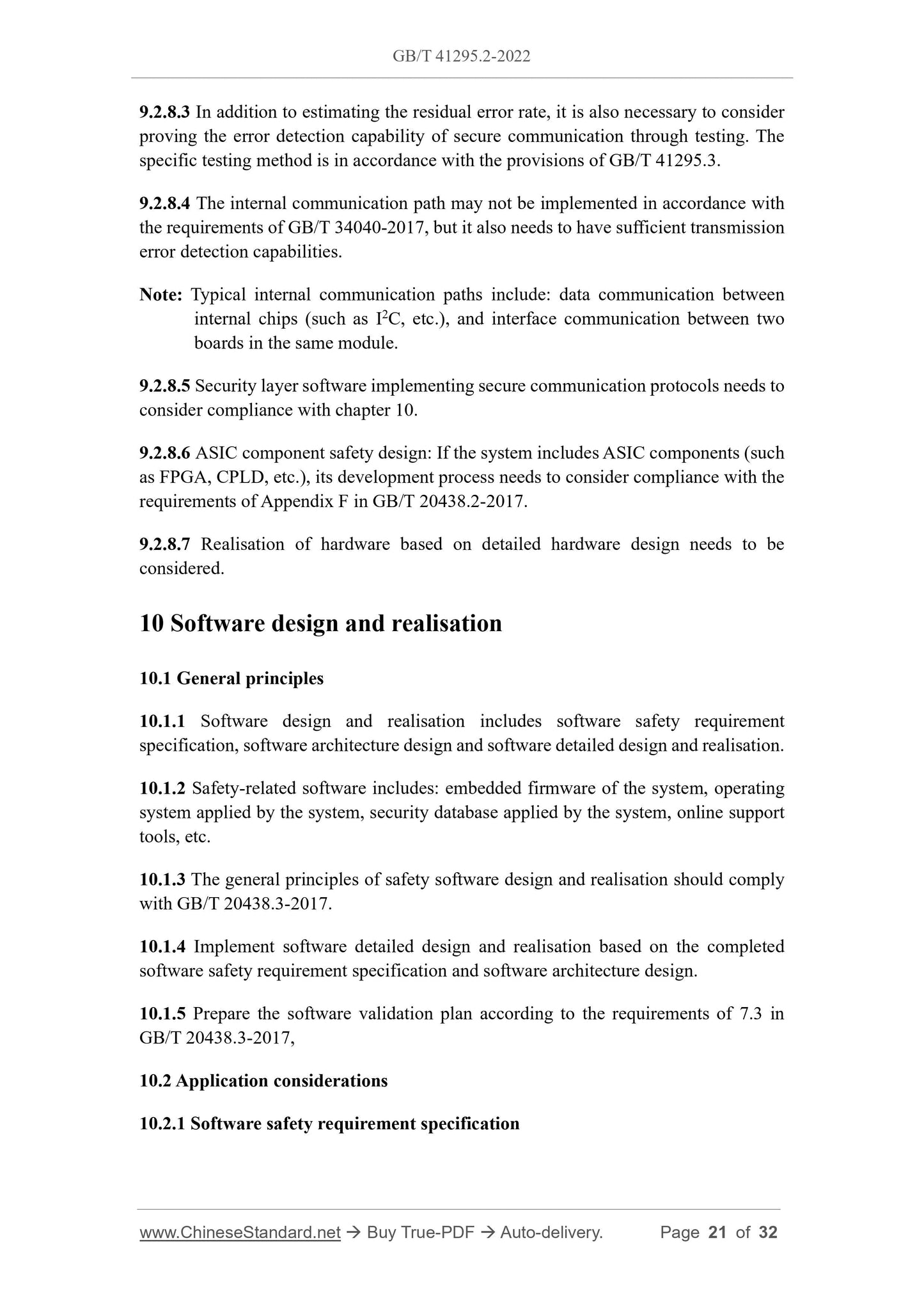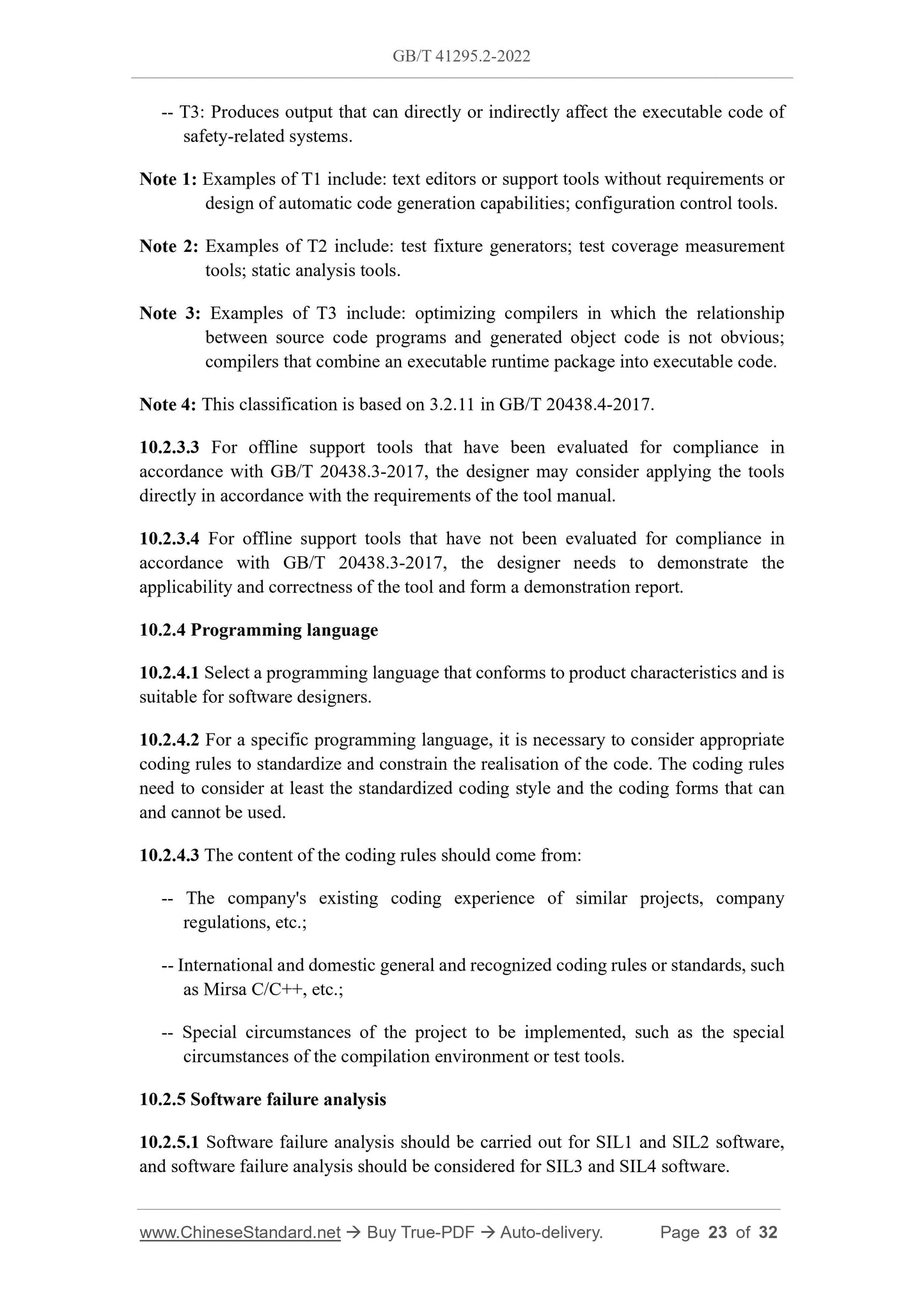1
/
of
12
www.ChineseStandard.us -- Field Test Asia Pte. Ltd.
GB/T 41295.2-2022 English PDF (GB/T41295.2-2022)
GB/T 41295.2-2022 English PDF (GB/T41295.2-2022)
Regular price
$320.00
Regular price
Sale price
$320.00
Unit price
/
per
Shipping calculated at checkout.
Couldn't load pickup availability
GB/T 41295.2-2022: Application guide of functional safety - Part 2: Design and realisation
Delivery: 9 seconds. Download (and Email) true-PDF + Invoice.Get Quotation: Click GB/T 41295.2-2022 (Self-service in 1-minute)
Newer / historical versions: GB/T 41295.2-2022
Preview True-PDF
Scope
This document provides guidelines for the design and realisation of functional safetysystems, including safety sensors, safety logic controllers, safety communication buses,
and safety actuators.
This document applies to the team for functional safety system research and
development (e.g., manufacturer) to give normative guidance on the development of
safety products that meet the appropriate safety integrity capabilities; it is used, as a
reference, by system integrators, evaluation agencies and users for the selection and
evaluation of appropriate functional safety systems.
Basic Data
| Standard ID | GB/T 41295.2-2022 (GB/T41295.2-2022) |
| Description (Translated English) | Application guide of functional safety - Part 2: Design and realisation |
| Sector / Industry | National Standard (Recommended) |
| Classification of Chinese Standard | N10 |
| Word Count Estimation | 22,229 |
| Issuing agency(ies) | State Administration for Market Regulation, China National Standardization Administration |
Share
